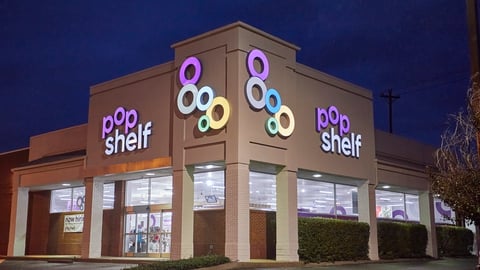article-13535.xml
The decline of the department store—the format that put the mass in market—seemed to prove that middle-class shoppers had all but disappeared and no amount of innovation could bring them back. Analysts warned that any retail concept targeted to the middle was flirting with disaster. It had become too diverse, with increasingly nuanced preferences, shopping styles and tastes.
But the rumors of death turned out to be highly exaggerated. The American middle class is back, thanks to the exclusivity, experience, value, quality and ego-satisfying brands of a revitalized J.C. Penney, Macy’s and Kohl’s.
J.C. Penney did not supersize or specialize into narrow niches. The hundred-year-old, traditionally mid-priced retailer is the talk of the turnarounds, with double-digit gains. Six years ago, it began the business of transformation. The company went off-mall, where its stores are shopped twice as often. It embraced the Internet, and was one of the first bricks-and-clicks retailers to allow online shoppers to pick up and return at stores. Today jcp.com is one of the top five Web sites in terms of paying customers. The site allows local inventory checks for apparel sizes, and is one of the few accessible at cashwrap.
Penney’s core customer, the middle-class mom, can shop for her family when and how she wants. And now the mix of five private brands (each doing $1 billion a year], exclusive designer brands and high-end non-exclusive brands is all about her. Penney is further enhancing her experience through partnerships with French cosmetic chain Sephora and an upcoming Ralph Lauren brand.
Mastering Brand
With the acquisition of May Co., Macy’s invented a new business model with the scale, margins and technological efficiencies to support upscale service expectations, ambience and presentation standards for 800 stores. Its very successful private labels, Alfani, INC and Charter Club, will be joined by a collection from Martha Stewart this fall in brighter, open, more welcoming stores. Last September, the entire fleet of stores operated by Federated Department Stores (with the exception of Bloomingdale’s] converted to the Macy’s nameplate. The brand has been relaunched with the largest advertising campaign in the company’s history, promoting it as a national fashion leader that’s locally accessible.
Kohl’s, too, is listening to its customers and responding with differentiated value—a top concern of shoppers today. The retailer opened a New York design office to manage development of its own exclusive brands, including new lines from Vera Wang, home decor from Hispanic celebrity Cristina Saralegui, sports gear from skateboarder Tony Hawk and more styles from Daisy Fuentes. Last fall, Kohl’s began the rollout of a new store prototype, designed to enhance the shopping experience with lounge areas, glass storefronts, higher ceilings and new merchandise displays. It plans to open more than 100 stores this year.
Most notably, these companies have become stronger master brands and have made strides in strategic brand management, building equity for both the master brand and their brand portfolios. Other categories can learn from their example.
Between Penney, Kohl’s and Macy’s, there’s now a battle brewing for the middle. Even Wal-Mart is making awkward attempts to reach it. Meanwhile, middle-class moms are enjoying some really great shopping.





